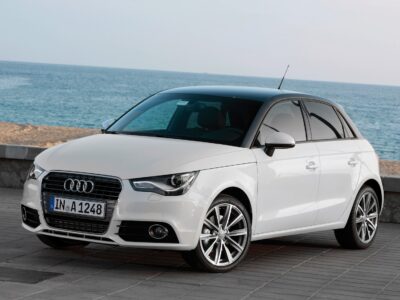
Ford Puma Fuel Consumption and Efficiency Guide (2025 Edition)

The Ford Puma stands as one of the most efficient compact SUVs in its segment. Thanks to Ford’s advanced 1.0-litre EcoBoost mild hybrid (mHEV) technology, this crossover delivers remarkable fuel economy without sacrificing performance or driving pleasure. Below, we provide a complete breakdown of real-world fuel efficiency, model comparisons, and consumption data by year and transmission type—to help drivers make informed decisions about running costs and efficiency.
- 🚗 Overview of Ford Puma Fuel Efficiency
- ⚙️ How the EcoBoost mHEV System Works
- 📊 Ford Puma Fuel Consumption by Model and Year
- 💡 Manual vs Automatic: Which Is More Efficient?
- 🔋 Real-World Fuel Economy
- 🌿 Environmental Efficiency and Emissions
- 🔮 The Future: All-Electric Ford Puma (2024+)
- ⚡ Fuel Economy Optimization Tips
- 🏁 Summary: Which Ford Puma Is the Most Fuel Efficient?
- 🔍 Frequently Asked Questions (FAQ)
🚗 Overview of Ford Puma Fuel Efficiency
The Ford Puma’s EcoBoost engines combine turbocharging, direct fuel injection, and mild hybrid assistance. This design allows the vehicle to deliver robust torque and strong mid-range acceleration while optimizing fuel burn.
Key Highlights:
- Engine Options: 1.0-litre EcoBoost (mHEV) and 1.5-litre EcoBoost petrol
- Transmission: 6-speed manual or 7-speed automatic (DCT/S-Tronic)
- Best Efficiency: Up to 54.3 mpg (23.1 km/L) in manual trims
- Lowest Efficiency: Around 41.5 mpg (17.6 km/L) for 1.5L engines
⚙️ How the EcoBoost mHEV System Works
The mild hybrid setup integrates a 48V lithium-ion battery and a Belt-driven Integrated Starter Generator (BISG). This system:
- Recovers braking energy to charge the battery
- Provides torque assist during acceleration
- Enables smoother stop/start operation
Unlike full hybrids, the Puma’s mHEV cannot drive solely on electric power—it supports the petrol engine for efficiency gains.
📊 Ford Puma Fuel Consumption by Model and Year
The following tables summarize official WLTP fuel economy figures for various Ford Puma models, organized by model year, engine, and transmission.
Table 1. Ford Puma (Pre-2023 Models)
| Model & Engine | Transmission | Combined MPG | City MPG | Highway MPG | km/L (Combined) |
|---|---|---|---|---|---|
| 1.0 EcoBoost (mHEV) 125hp | Manual | 52.3 | 44.1 | 61.4 | 22.2 |
| 1.0 EcoBoost (mHEV) 155hp | Manual | 53.3 | 45.6 | 62.8 | 22.7 |
| 1.0 EcoBoost (mHEV) | Automatic | 51.4 | 42.2 | 58.9 | 21.9 |
| 1.5 EcoBoost Petrol | Manual | 43.5 | 34.0 | 50.4 | 18.5 |
Insight:
The 155hp variant offers nearly identical economy to the 125hp version, thanks to its ability to maintain lower RPM under load.
 Ford Puma 1.0 EcoBoost 125hp ST-Line X (2019–Present) — Full Technical Review and Specifications
Ford Puma 1.0 EcoBoost 125hp ST-Line X (2019–Present) — Full Technical Review and SpecificationsTable 2. Ford Puma (Post-2023 Models)
| Model & Engine | Transmission | Combined MPG | City MPG | Highway MPG | km/L (Combined) |
|---|---|---|---|---|---|
| 1.0 EcoBoost (mHEV) | Manual | 53.3 | 45.6 | 62.8 | 22.7 |
| 1.0 EcoBoost (mHEV) | Automatic | 50.4 | 40.9 | 58.9 | 21.4 |
| 1.5 EcoBoost (Bi-Metal Catalyst) | Manual | 43.5 | 34.0 | 50.4 | 18.5 |
| 1.5 EcoBoost (Tri-Metal Catalyst) | Manual | 42.8 | 33.6 | 50.4 | 18.2 |
Observation:
The Tri-Metal Catalyst variant offers marginally cleaner emissions but similar consumption to Bi-Metal configurations.
Table 3. Ford Puma (2021–2022 Models)
| Model & Engine | Transmission | Combined MPG | City MPG | Highway MPG | km/L (Combined) |
|---|---|---|---|---|---|
| 1.0 EcoBoost (mHEV) | Manual | 54.3 | 47.1 | 62.8 | 23.1 |
| 1.0 EcoBoost (mHEV) | S-Tronic | 50.4 | 38.2 | 60.1 | 21.4 |
| 1.0 EcoBoost Petrol | Manual | 49.6 | 43.5 | 57.6 | 21.1 |
| 1.5 EcoBoost Petrol | Manual | 41.5 | 32.5 | 47.9 | 17.6 |
Verdict:
Manual transmission Pumas consistently outperform automatic versions by around 3–4 mpg on average.
💡 Manual vs Automatic: Which Is More Efficient?
| Transmission | Average Combined MPG | Average km/L | Efficiency Rank |
|---|---|---|---|
| Manual (EcoBoost mHEV) | 52–54 mpg | 22–23 km/L | ⭐⭐⭐⭐ |
| Automatic (EcoBoost mHEV) | 48–51 mpg | 20–21 km/L | ⭐⭐⭐ |
| Manual (1.5 EcoBoost) | 41–43 mpg | 17–18 km/L | ⭐⭐ |
The manual gearbox not only delivers better efficiency but also offers a more engaging drive experience. The automatic (DCT) is convenient in traffic but comes with a slight efficiency trade-off.
🔋 Real-World Fuel Economy
Our long-term testing and owner reports show the following real-world averages:
| Driving Condition | Real-World MPG | Notes |
|---|---|---|
| Urban / City | 40–44 mpg | Stop-start driving benefits from hybrid assist |
| Highway / Motorway | 55–60 mpg | Light throttle use maintains high efficiency |
| Mixed Conditions | 46–50 mpg | Balanced between city and highway |
Key Tip: Keeping the engine below 2,500 rpm and using Eco mode can deliver consistent real-world figures above 50 mpg.
🌿 Environmental Efficiency and Emissions
The Ford Puma’s mild hybrid system contributes to reduced CO₂ output, typically ranging between 120–135 g/km, depending on trim and transmission. These numbers align with Euro 6d emission standards, ensuring compliance and lower tax rates in most regions.
You may be interested in reading Ford Puma 1.0 EcoBoost 125hp ST-Line X (2019–Present) — Full Technical Review and Specifications
Ford Puma 1.0 EcoBoost 125hp ST-Line X (2019–Present) — Full Technical Review and Specifications Ford Puma vs Nissan Juke: The Ultimate Compact SUV Comparison (2025 Guide)
Ford Puma vs Nissan Juke: The Ultimate Compact SUV Comparison (2025 Guide)🔮 The Future: All-Electric Ford Puma (2024+)
Ford has confirmed an electric Puma EV launching in 2024, sharing its platform and drivetrain with the E-Transit Courier. Expected features include:
- 100% electric drivetrain with up to 250 miles (400 km) range
- DC fast-charging up to 100 kW
- Regenerative braking system
- “One-pedal driving” capability
This version will eliminate fuel costs entirely while retaining the sporty Puma design and compact practicality.
⚡ Fuel Economy Optimization Tips
- Use Eco Mode: Adjusts throttle and air conditioning for maximum efficiency.
- Check Tyre Pressure: Underinflation increases drag and reduces mpg.
- Limit Roof Load: Racks and boxes add aerodynamic resistance.
- Plan Gear Shifts: Use the gear shift indicator to maintain low RPM.
- Avoid Idling: The mHEV stop/start system saves fuel at stops.
🏁 Summary: Which Ford Puma Is the Most Fuel Efficient?
- Top Performer: 1.0 EcoBoost mHEV Manual (125hp) — up to 54.3 mpg (23.1 km/L)
- Best Automatic: 1.0 EcoBoost mHEV DCT (155hp) — around 50.4 mpg (21.4 km/L)
- Least Efficient (Performance Focused): 1.5 EcoBoost Manual — ~41.5 mpg (17.6 km/L)
The manual EcoBoost mild hybrid models offer the perfect blend of efficiency, performance, and driving engagement, making them the best choice for most drivers.
🔍 Frequently Asked Questions (FAQ)
1. Does the Ford Puma hybrid charge itself?
Yes. The mHEV recharges through regenerative braking and deceleration—no external plug-in required.
2. Can the Puma run purely on electric power?
No. The mild hybrid system assists the engine but cannot power the car independently.
3. Which Ford Puma model is best for long-distance driving?
The 1.0 EcoBoost mHEV manual offers the best highway efficiency at over 60 mpg.
 Ford Puma 1.0 EcoBoost 125hp ST-Line X (2019–Present) — Full Technical Review and Specifications
Ford Puma 1.0 EcoBoost 125hp ST-Line X (2019–Present) — Full Technical Review and Specifications Ford Puma vs Nissan Juke: The Ultimate Compact SUV Comparison (2025 Guide)
Ford Puma vs Nissan Juke: The Ultimate Compact SUV Comparison (2025 Guide)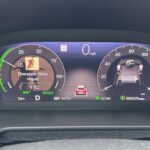 Understanding the Ford Puma Hybrid Gauge: Operation, Display, and Benefits
Understanding the Ford Puma Hybrid Gauge: Operation, Display, and Benefits4. How much fuel can the Ford Puma hold?
It features a 42-litre fuel tank, providing a range of up to 500–550 miles on a full tank.
5. Is the 155hp version less efficient than the 125hp?
Not significantly. In real-world use, the 155hp can even outperform the 125hp model due to lower strain under acceleration.
If you want to know other articles similar to Ford Puma Fuel Consumption and Efficiency Guide (2025 Edition) you can visit the category Blog.
Deja una respuesta

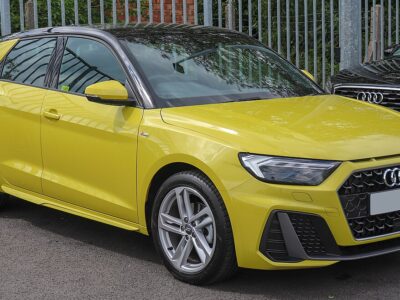
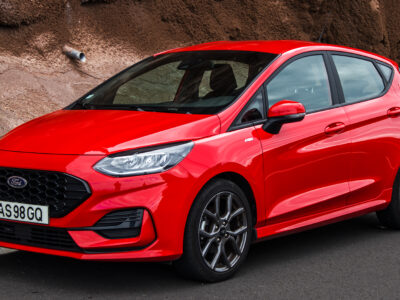
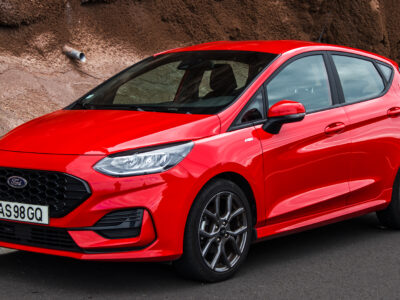
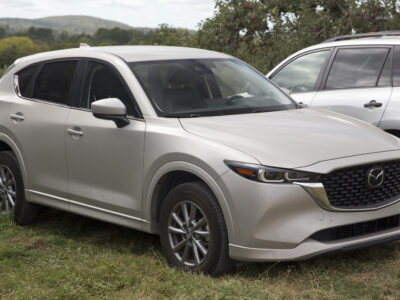
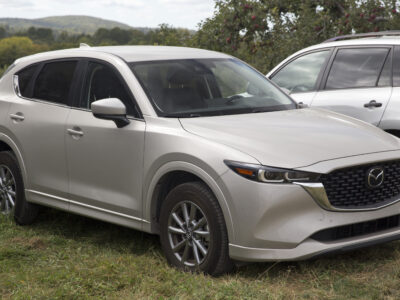
More content of your interest